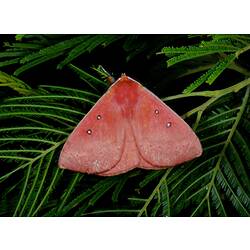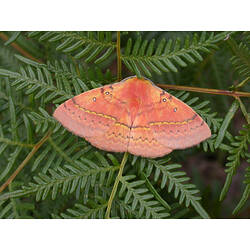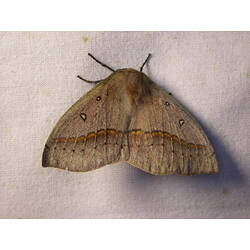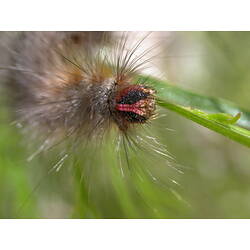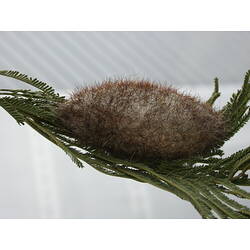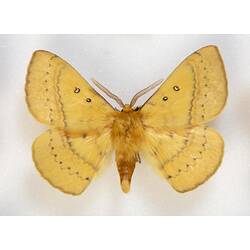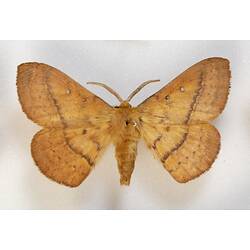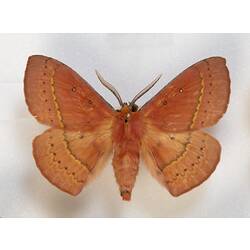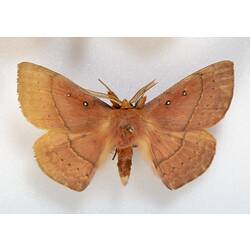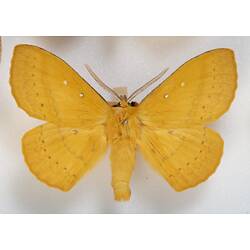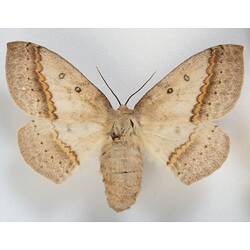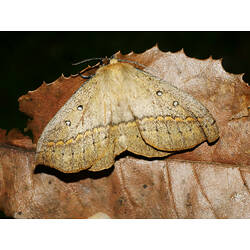General Description
Males: Body and wings a variety of colours ranging from yellow through orange and brown to red. Forewings have two white spots encircled by black. Both fore- and hindwings have a transverse line just beyond the middle of the wing with another line, sometimes reduced to spots. Antennae are bipectinate (comb-like on both sides) . Females: larger than males with more drab colours varying from brown to orange. Wings have transverse lines similarly placed to males. The antennae are threadlike. Wingspan: Male: 55 - 60 mm, female: 75 - 85 mm.
Biology
In Victoria this species has been recorded in all months except June and July, though it is most numerous from November to April. Caterpillars are very hairy. Their spines are pushed through the cocoon making it appear spiky. The hairs break off easily into bare skin and may result in sustained pain. The common name, urticating, comes from the stinging senstation the hairs cause when handled. Larval food-plants include various Acacia species and the common Pine tree (Pinus radiata).
Distribution
Found throughout Victoria and from Queensland to Tasmania and in South Australia.
More Information
-
Animal Type
-
Animal SubType
-
Brief Id
A quite large, variably coloured moth.
-
Colours
Yellow, Red, Orange, Brown, White
-
Maximum Size
85 mm
-
Diet
Herbivore
-
Diet Categories
Plants
-
Hazards
Hairs of larvae and on cocoon cause a stinging sensation (ie. are urticating).
-
Endemicity
-
Commercial
No
-
Conservation Statuses
CITES: Not listed, FFG Threatened List: Not listed, EPBC Act 1999: Not listed, IUCN Red List: Least Concern
-
Flight Start
September
-
Flight End
November
-
Taxon Name
-
Scientific Author
(Boisduval, 1832)
-
Common Name
Urticating Anthelid Moth
-
Kingdom
-
Phylum
-
Subphylum
-
Class
-
Order
-
Superfamily
-
Family
-
Subfamily
-
Genus
-
Species Name
nicothoe

